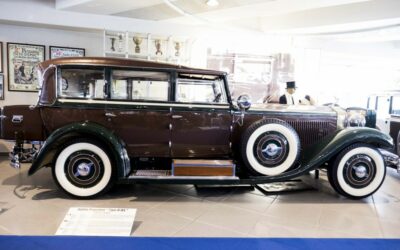Introduce
Ugo Veniero D’Annunzio was the third child of Gabriele D’Annunzio and the Roman aristocrat Maria Hardouin di Gallese, whom the poet, just twenty years old, married in 1883. At the time, there were rumors, later proven false, that he was the result of an adulterous relationship between Gallese and the deceased senator Vincenzo Morello-Rastignac, and that D’Annunzio knew about it, which led to his separation from his wife.
Of Gabriele D’Annunzio’s children, born within and outside of marriage, Veniero was the one to have the most successful career and inherit the most adventurous traits. After spending his childhood and adolescence in Rome, Paris, and Zurich, he graduated in mechanical engineering from the Polytechnic University of Zurich in 1909. He worked in Switzerland and Italy, where he was called to military service in 1914. He served at the Caproni workshops in the aviation section and, discharged as a captain after the armistice, he was head of the mission sent by the company to Detroit in the United States from 1917 to 1919. After returning to Italy for a short time, he was hired as a designer by the automotive company Isotta-Fraschini before returning to the United States as its representative.
In 1928, he became the Director and Vice President of the American Aeronautical Corporation of Enea Bossi, contributing to the company’s success. In 1930, he became an American citizen.
Despite the possible dubious parentage, he always maintained a very close relationship with Gabriele D’Annunzio, whom he often visited and with whom he had a constant and affectionate correspondence from America, although his dream of seeing him visit the United States never materialized.
In addition to his entrepreneurial activities, Ugo Veniero was politically active in support of Italian nationalism, initially supporting his father as one of the celebrities, along with Enrico Caruso and Giovanni Caproni, present at the large rally in 1920 at the City College Stadium in New York, which attracted thousands of people to celebrate the anniversary of the Fiume expedition. His commitment became even more direct, especially in the 1930s, as he became the de facto coordinator of the fascist regime’s propaganda activities in the United States, all focused on supporting the sentiments and nationalist pride of Italian immigrants.
He died in 1945 in New York.



